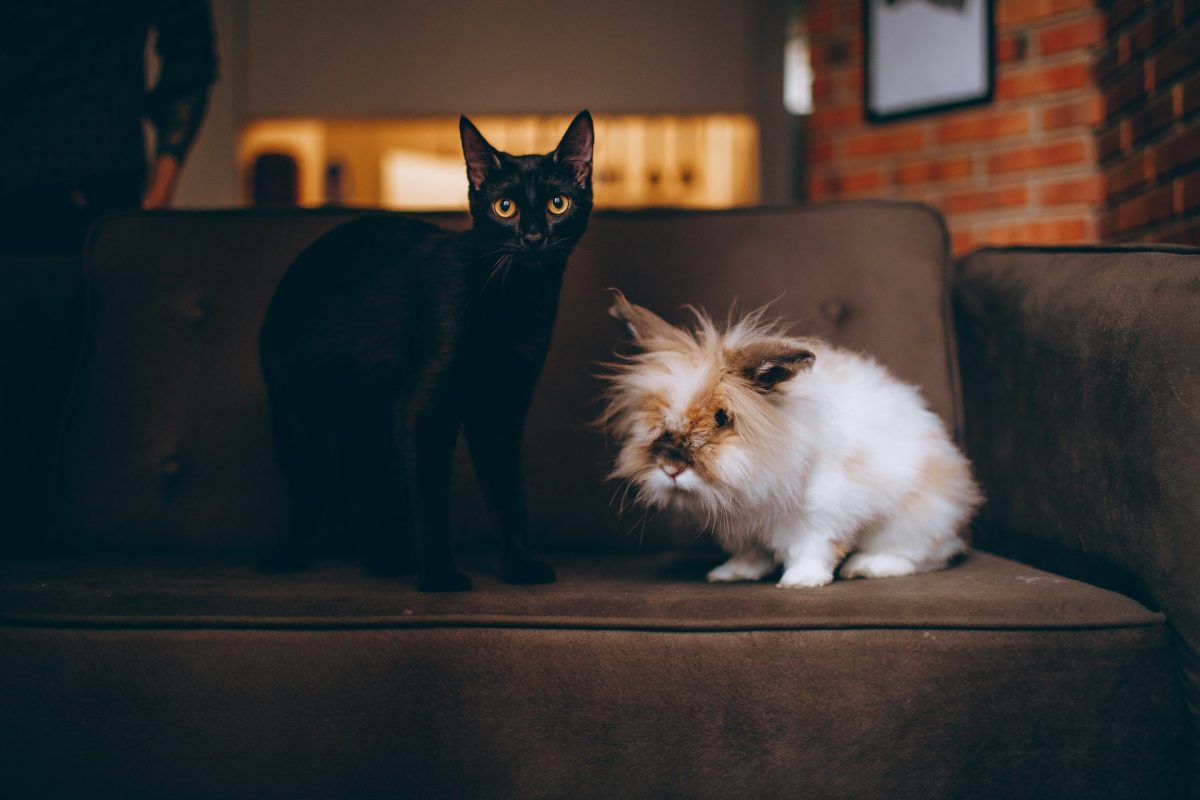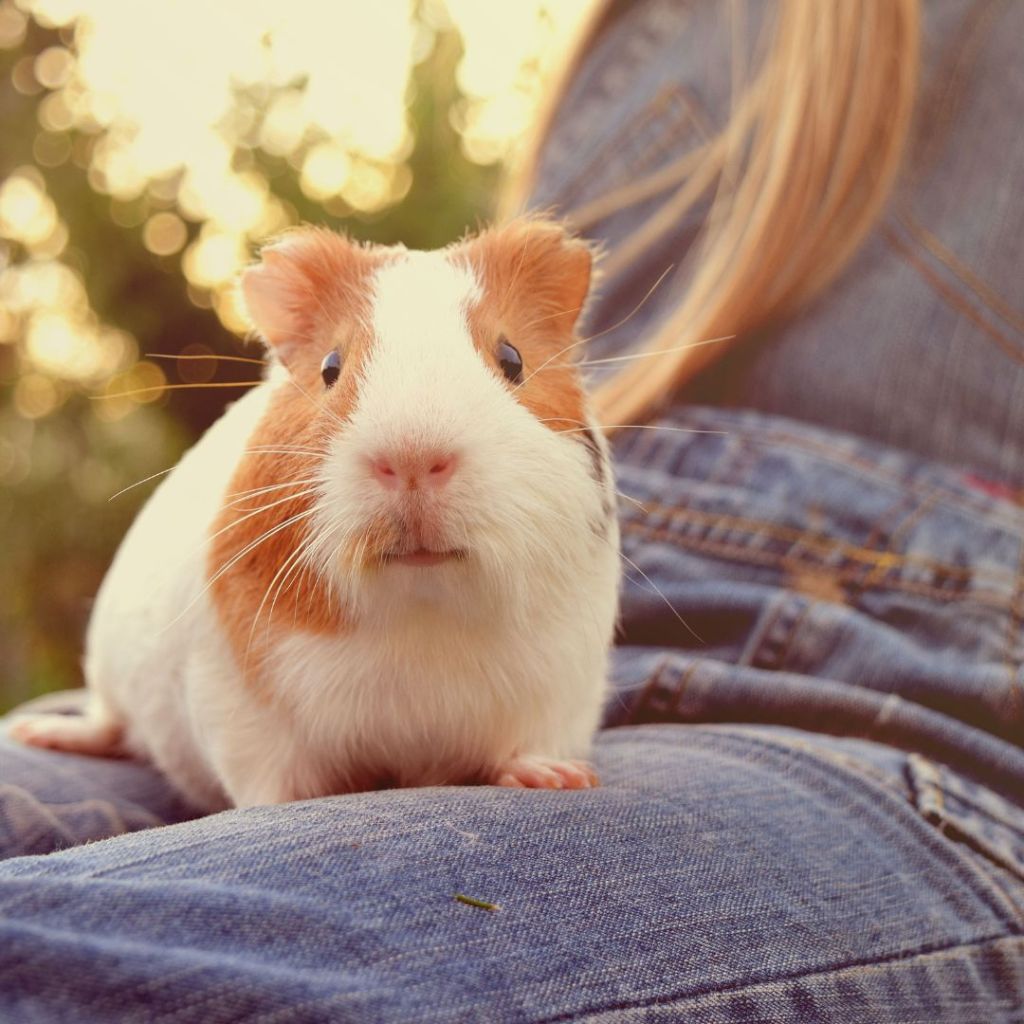
Cats and Other Pets: Can Cats and Small Animals Live Together?
24 Mar 2023.
If done right, it’s possible to introduce your cat to another feline and have them live peacefully together. But what about other pets? Is it possible for your cat and other small animals such as birds or bunnies to coexist under the same roof? While it can be complicated to override your kitty’s prey instinct, it is possible for your cat and a small animal to share the same home. Below, Cat in a Flat dives into what it takes for your feline and your other small pets to peacefully coexist.
Table of contents
Is it possible for my cat and a small animal to make friends?

Obviously, there’s no guarantee that your kitty will get along with a new pet, whether it be a dog, another cat, or a rodent or bird. The younger your kitty is when you introduce a new pet, the easier it will be for Mr. Whiskers to adjust and see another small animal as friend and not food! Hence, you should aim to introduce a small pet when your cat is still a kitten.
If your feline is no longer a kitten, this doesn’t necessarily mean you can’t introduce a small animal into your household. However, you should keep your cat’s hunting instincts in mind when making the decision. Some felines will have stronger hunting instincts than others, so here’s how to assess your kitty’s desire to hunt.
- Is your cat spayed or neutered? Spaying or neutering your kitty, especially at a young age, will vastly decrease their desire to hunt. This is because un-neutered felines develop their strongest hunting instincts after they mature sexually.
- What breed is your cat? Mr. Whiskers’ activity levels, and hence their need to hunt, can vary depending on breed. For example, Ragdoll cats are usually very docile and gentle and not good hunters. Bengal cats, on the other hand, are extremely active and have much higher hunting instincts.
- How old is your cat? Your furry friend’s age can also have an impact on how strong their hunting instincts are. The older a cat gets, the more these instincts decrease (especially if they’re neutered). Usually, cats over three years old have less of an interest in hunting.
- Is your cat an indoor cat? Your kitty is less likely to hunt if they are an indoor-only cat. This is because they don’t develop and regularly practice the hunting skills that outdoor felines do.
Ultimately, if you plan to give a cat and a small animal a home, it’s important to stay realistic. Yes, wonderful friendships can form between different animal species—there wouldn’t be so many cute odd animal pairings on the internet if this weren’t true! However, never take it for granted that your cat will see a smaller animal as a friend and not prey and that your small animal won’t in turn fear your cat as a predator. It’s possible for even a large bunny or guinea pig to feel frightened of your feline (or for your kitty to harm them), so be realistic about your expectations.
Introducing cats and small animals
If you do decide to bring a small animal into your home, there are a few basic tips to follow so you properly introduce Mr Whiskers and your new pet.
Choose the right small animal
Because of your kitty’s hunting instincts, it sometimes works best to choose ‘large’ small animals as companions. This can include rabbits, ferrets, tortoises, and guinea pigs. Animals like larger tortoises and iguanas will most likely simply ignore your cat (and vice versa). Over time a ferret might even bond with your cat by sleeping and playing together. A rabbit or a guinea pig might be another good match for your kitty as these small animals are docile and move slowly. Hence, they are less likely to trigger your fur friend’s hunting instinct.

Small rodents such as mice or hamsters can be a more tricky addition to your home. It’s easy for many of these types of small animals to escape. Even the most docile of kitty’s may be tempted by small, fast prey like a mouse or hamster.
Manage your space
Before bringing a small animal into your home, invest first in a sturdy enclosure, cage, or aquarium. This is your new pet’s safe space. Let your kitty smell and interact with the enclosure so they get used to it. Once you’ve comfortably settled your small pet into the cage, let your kitty satisfy their curiosity about this new animal friend by sniffing the (closed) cage.
If Mr Whiskers exhibits any sort of aggressive behaviour—such as trying to push their paw through the bars—firmly move their paw and say ‘no’. NEVER physically punish your cat for showing natural behaviours. This will only sour the relationship between you, your cat, and your new small animal.
Give your cat attention
You don’t want your furry friend to think you’ve shifted your affection to a new pet. Hence, it’s important to spend lots of time cuddling and playing with your cat so they don’t feel left out. Play time with your kitty also helps satisfy their hunting instincts so they’re less interested in hunting your other small animal.
However, avoid playing with toys that your cat might associate with your new pet. For example, if you have a hamster, avoid toys that squeak and look like mice. If you have a bird, stay away from toys that have feathers. There are a lot of other safe toy options out there for your feline that don’t run the risk of making them also see a new small pet as food instead of friend!
Going out of town and looking for pet care for a cat or other small animal? Our lovely pet sitters are here to help! Learn more about what a pet sitter does and how to book a stellar five-star sitter.
- #cat behaviour
- #catinaflat
- #pet care
- cat behaviour
- cats and small animals
- cats and small pets
- pet behavior
- small pets

